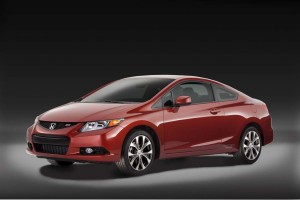A key part of Honda’s product development program could be out of action indefinitely in the wake of the earthquake and tsunami that devasted Northeast Japan earlier this month.
With Japanese automakers still struggling to assess the damage done by the natural disaster – and subsequent nuclear crisis – Honda could be among the makers hardest hit. Even plans for its new Civic model could be impacted by the events of recent weeks.
Honda has been under fire in recent months because its product line has begun to look dated next to new vehicles from other Asian, European and American carmakers – notably including the new Ford Focus and Hyundai Elantra models targeting the long-dominant Civic.
Howver, it now appears another casualty of the deadly quake — which has claimed the lives of as many as 26,000 — was Honda’s product development center.
The R&D facility, in Tochigi, suffered the only known fatality at any facility operated by a major automaker, one worker killed during the March 11 earthquake when a wall collapsed. Employees who will work on the restoration started returning this week. But repairing the quake damage at the center will take considerably more time, Honda officials have confirmed.
“Based on the expectation that it will take several months until the complete recovery of these facilities, Honda decided to temporally transfer some functions such as the automobile product development” to other Honda installations, the company said in a statement.
While some tests on various vehicles could be moved to other locations, other R&D efforts, such as crash testing could be delayed on several projects, which could leave them behind schedule.
Honda, meanwhile, said it would also keep its Japanese automotive assembly plants closed until at least April 3. The maker does, however, plan to restart motorcycle and power product production at Kumamoto Factory on Monday, March 28.
Like other Japanese makers, Honda has another worry, the possibility that shortages of Japanese-made parts could lead to a slowdown or even the complete idling of some of its North American “transplant” assembly lines.
A Deutsche Bank analysis, earlier this week, warned that Honda could run into trouble during the critical ramp-up of the new Civic, though plans for its launch still appear to be moving forward.
(Meanwhile, a new study warns that the Japanese auto crisis could completely restructure the global auto industry. Click Here for more.)
Honda is by no means alone in feeling the impact of the quake, Nissan said it has to assess the operational impact from the Japanese earthquakes on the company’s operations in the U.S., though production at its Tennessee and Mississippi plants should run normally through at least April 1.
“Our supply chain teams in Japan and America continue to work relentlessly to resolve the bottlenecks as they appear, so that our manufacturing operations have an uninterrupted activity to support market needs,” said Carlos Tavares, CEO of Nissan Americas.
In addition, Nissan is studying whether it can ship V6 engines produced at a plant in Decherd, TN to Japan to replace lost production from the Iwaki engine plant, which was crippled by the quake.
Nissan has been able to resume production of the Leaf electric vehicle, as well as the batteries it uses at its Japanese plants. But the ability to sustain production “will depend to a large degree on the frequency of rolling blackouts due to electricity shortages,” the automaker cautioned.

